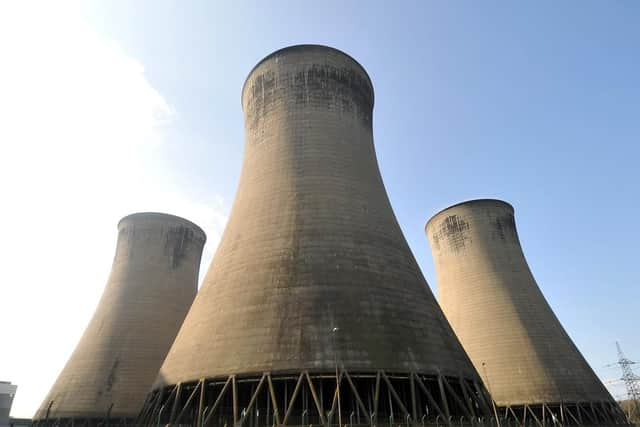Eggborough Power Station: The history of Yorkshire’s coal-fired power generator based in Wakefield and dates back to the 1960s
For 57 years Eggborough Power Station had been the key power source for Wakefield, with a generating capacity of 1,960 megawatts (MW). This was enough electricity to power two million homes in the city, equivalent to the area of Leeds and Sheffield.
It was capable of co-firing biomass situated on the River Aire, between the towns of Knottingley and Snaith.
Advertisement
Hide AdAdvertisement
Hide AdHowever, the station was closed down in September 2018 and demolition works began in 2020, with the eight cooling towers being the first to come down in 2021.


The Bunker Bay was torn down on March 6, 2022, the DA Bay was demolished on June 1, 2022 and the chimney and boiler house were demolished on July 24, 2022.
Initially, the intention was to replace it with a 2,500 MW gas power plant, but due to increasing gas prices, this plan did not go ahead.
Here is everything you need to know about the history of Eggborough Power Station.
Foundation of Eggborough Power Station
Advertisement
Hide AdAdvertisement
Hide AdThe station started generating electricity in 1967, making use of spare coal-reserves.
It was originally built for and initially operated by the Central Electricity Generating Board.
The Eggborough station was first proposed alongside Ferrybridge “C” power station in April 1961 and construction was officially permitted in early 1962, which included the demolition of Sherwood Hall.
It was designed by architect George Hooper of Sir Percy Thomas and Son. Large widths of aluminium cladding and dark glazing were calculated to give ‘a cool and defining architectural expression that subtly contrasted with the warm concrete towers and the black-capped chimney’. Construction of the station was completed in 1967.
Advertisement
Hide AdAdvertisement
Hide AdThe station was designed to accommodate four 500 MW coal-fired pulverised fuel units, resulting in the station’s total electric output of 1,960 MW. The first of these units were connected to the national grid in February 1967. Units two, three and four had all been commissioned by the year 1970.
The station was officially opened by Brigadier Kenneth Hargreaves on September 18, 1970.
The eight 90-metre (300 ft) high cooling towers were arranged in two rows of four located to the north of the main power station building. There was a single 200 metres (600 ft) tall chimney located east of the main building. This was built in 1966. The electrical switching station was located to the south of the main building.
A retrofit turbine upgrade took place to increase the station’s efficiency and flexibility by improving part-load and two-shift operation.
The station recruited around 300 people, as well as contractors.
In 2018, the Fast and the Furious film, Hobbs and Shaw, was filmed at the decommissioned station.
Comment Guidelines
National World encourages reader discussion on our stories. User feedback, insights and back-and-forth exchanges add a rich layer of context to reporting. Please review our Community Guidelines before commenting.
